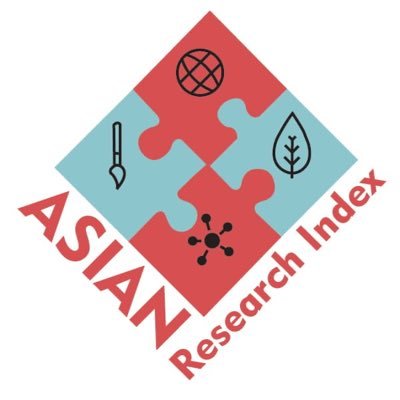Prevalence of Overuse Injuries among Taekwondo Athletes in Peshawar: A Cross-Sectional Study
DOI:
https://doi.org/10.55735/we4a6z75Keywords:
Athletes, Overuse injuries, TaekwondoAbstract
Background: Overuse injuries are common among Taekwondo athletes, developing gradually from repetitive stress rather than a single event. The sport’s dynamic nature, with frequent powerful kicks, makes the lower extremities vulnerable. Continuous strain from striking, pivoting, jumping, and sudden directional changes stresses muscles, tendons, and joints. This can lead to conditions like tendinitis, stress fractures, and ligament irritation. Without proper recovery or technique, these stresses accumulate over time, increasing the risk of overuse injuries. Objective: To determine the prevalence of overuse injuries among taekwondo athletes, Peshawar, Khyber Pakhtunkhwa, Pakistan. Methodology: To determine the prevalence of overuse injuries among taekwondo athletes, a cross-sectional study was conducted using the Oslo Sports Trauma Research Center questionnaire. A total of 163 athletes were selected through convenient sampling from Qayyum Stadium, Hayatabad Sports Complex, and registered taekwondo academies in Peshawar. Data focused on identifying symptoms of overuse injuries. Continuous variables, such as age, were presented using means and standard deviations, while categorical variables, such as gender, belt rank, and injury region, were expressed in frequencies and percentages. Chi-square tests were used to examine associations between injury presence and variables like performance impact, training reduction, and pain severity. Results: A total of 163 subjects participated in this study, in which 161 participants (98.8%) reported positive responses towards overuse injuries. The most frequently affected age group was 15-25 years of age. Most of the athletes were male, 118 (72.4%). Most of the overuse injuries occurred in the knee region, 121 (74.2%), and had (p=0.016), followed by hip problems, i.e., 119 (73%) has (p=0.019), and least of the injuries occurred in the hand region 83 (50.9%) has (p=0.147). Conclusion: The study concluded to find the prevalence of overuse injuries among taekwondo athletes.
Downloads
References
1. Minghelli B, Machado L, Capela R. Musculoskeletal injuries in taekwondo athletes: a nationwide study in Portugal. Revista da Associação Médica Brasileira. 2020;66(2):124-32. DOI: https://doi.org/10.1590/1806-9282.66.2.124
2. BOYALI E, Patlar S, Ergin M, KIVRAK AO, Karadağ T, YILDIZ H, et al. The Types of Injury, Regions, and Frequency in Athletes Participating Universities Taekwondo Championship. Türk Spor ve Egzersiz Dergisi. 2019;21(1):52-7. DOI: https://doi.org/10.15314/tsed.542774
3. Yeole¹ U, Gore M, Gharote G, Panse R. PREVALANCE OF MUSCULOSKELETAL INJURIES IN TAEKWONDO PLAYERS.
4. Tayshete I, Akre M, Ladgaonkar S, Kumar A. Comparison of Effect of Proprioceptive Training and Core Muscle Strengthening on the Balance Ability of Adolescent Taekwondo Athletes.
5. Fallahi Farrash F, Sheikhhoseini R, Babakhani F. Effect of 8 Weeks of Functional Exercise on Soft Surfaces on Balance and Electromyographic Activity of Selected Muscles in Female Taekwondo Athletes. Women’s Health Bulletin. 2020;7(2):9-15.
6. Paramitha ST, Rosadi TY, Ramadhan MG, Suwanta DM, editors. The Influence of Flexibility Training on the Accuracy of the Dollyo Chagi Kick in Taekwondo Martial Arts. 4th International Conference on Sport Science, Health, and Physical Education (ICSSHPE 2019); 2020: Atlantis Press. DOI: https://doi.org/10.2991/ahsr.k.200214.084
7. Barnamehei H, Khazaee F, Safaei MA, Jabari H, Golfeshan N, Barnamehei M, et al. Motor learning and training strategy effect on motor control; Comparison between Taekwondo and Karate front kick (Ap Chagi and Mae Geri). International Journal of Martial Arts. 2020;6:48-65. DOI: https://doi.org/10.51222/injoma.2020.11.6.48
8. AREA O. Injuries at the National Sport Festival Taekwondo Championship in Sri Lanka. Medicina dello Sport. 2020;73(1):96-106. DOI: https://doi.org/10.23736/S0025-7826.20.03596-6
9. Seo B-D, Kim H-J, Ju J-Y. Effect of Muscle Fatigue on the Proprioception by the Taekwondo Training Type. Journal of the Korean Society of Physical Medicine. 2020;15(3):1-9. DOI: https://doi.org/10.13066/kspm.2020.15.3.1
10. Ranaweera L, Kumari MI, Kodikara K. Epidemiological study of injuries in Sri Lankan Female Taekwondo Athletes: A Prospective Study.
11. Lee K-K. DEFORMATION OF FOOT IN TAEKWONDO ATHLETES.
12. Mohd Saleh M, Abdul Hamid SF, Shahudin NN, Che Ismail CMT. Common injury incidences occur in Malaysian Taekwondo athletes. Malaysian Journal of Sport Science and Recreation. 2019;15(2):35-43.
13. Lee HM, Oh S, Kwon JW. Effect of Plyometric versus Ankle Stability Exercises on Lower Limb Biomechanics in Taekwondo Demonstration Athletes with Functional Ankle Instability. International Journal of Environmental Research and Public Health. 2020;17(10):3665. DOI: https://doi.org/10.3390/ijerph17103665
14. Goes RA, Lopes LR, Cossich VRA, de Miranda VAR, Coelho ON, do Carmo Bastos R, et al. Musculoskeletal injuries in athletes from five modalities: a cross-sectional study. BMC Musculoskeletal Disorders. 2020;21(1):1-9. DOI: https://doi.org/10.1186/s12891-020-3141-8
15. Suul P. A Research on the INJURY by Exercise among TAEKWONDO Poomsae Athletes in Korean Universities. International Journal of Martial Arts during 250,000 training hours. British journal of sports medicine. 2018;52(11):735-40. DOI: https://doi.org/10.1136/bjsports-2017-097530
16. Zarei M, Johari K, Bagherian R. Lower Extremity Risk Factors in Iranian Adolescent Taekwondo Players. Physical Treatments-Specific Physical Therapy Journal. 2020;10(1):7-14. DOI: https://doi.org/10.32598/ptj.10.1.403.1
17. Yalfani A, Taghizadeh M, Haji Ahmadi A. Prevalence and Mechanism of Sports Injuries in Poomsae Premier League Players. Function and Disability Journal. 2019;2(1):165-9.
18. Fallon K. Overuse injuries in the athlete. Australian journal of general practice. 2020;49(1/2):7. DOI: https://doi.org/10.31128/AJGP-07-19-5016
19. Saremi H, Shahbazi F, Rahighi AH. Epidemiology of generalized ligamentous laxity in Northwest of Iran: A pilot national study on 17–40 years old adults in Hamadan province. Clinical Epidemiology and Global Health. 2020;8(2):461-5. DOI: https://doi.org/10.1016/j.cegh.2019.10.009
20. Quevedo-Prince AK. The Effect of Psychological Factors on Athletic Injury and Recuperation. training.3:5.00.
21. Van der Sluis A, Brink M, Pluim B, Verhagen E, Elferink‐Gemser M, Visscher C. Is risk‐taking in talented junior tennis players related to overuse injuries? Scandinavian journal of medicine & science in sports. 2017;27(11):1347-55. DOI: https://doi.org/10.1111/sms.12729
22. Lundberg Zachrisson A, Ivarsson A, Desai P, Karlsson J, Grau S. Athlete availability and incidence of overuse injuries over an athletics season in a cohort of elite Swedish athletics athletes prospective study. Injury epidemiology. 2020;7:1-10. DOI: https://doi.org/10.1186/s40621-020-00239-0
23. Brunner R, Bizzini M, Niedermann K, Maffiuletti NA. Epidemiology of traumatic and overuse injuries in Swiss professional male ice hockey players. Orthopaedic journal of sports medicine. 2020;8(10):2325967120964720. DOI: https://doi.org/10.1177/2325967120964720
24. Aicale R, Tarantino D, Maffulli N. Overuse injuries in sport: a comprehensive overview. Journal of orthopaedic surgery and research. 2018;13(1):1-11. DOI: https://doi.org/10.1186/s13018-018-1017-5
26. Park KJ, Byung SB. Injuries in elite Korean fencers: an epidemiological study. British journal of sports medicine. 2017;51(4):220-5. DOI: https://doi.org/10.1136/bjsports-2016-096754
27. Çelebi MM, Dündar İ, Zergeroğlu AM. Injury Epidemiology in Elite Taekwondo Athletes: Retrospective Cross Sectional Study Including Three International Championships. Spor Hekimligi Dergisi/Turkish Journal of Sports Medicine. 2019;54(4). DOI: https://doi.org/10.5152/tjsm.2019.139
28. Loosemore M, Lightfoot J, Beardsley C. Boxing injuries by anatomical location: a systematic review. Medicina Sportiva: Journal of Romanian Sports Medicine Society. 2015;11(3):2583.
29. Post EG, Struminger AH, Hibberd EE. Sport specialization is associated with upper-extremity overuse injury in high school baseball players. Journal of shoulder and elbow surgery. 2020;29(9):1775-82. DOI: https://doi.org/10.1016/j.jse.2020.01.092
30. Post EG, Trigsted SM, Riekena JW, Hetzel S, McGuine TA, Brooks MA, et al. The association of sport specialization and training volume with injury history in youth athletes. The American journal of sports medicine. 2017;45(6):1405-12. DOI: https://doi.org/10.1177/0363546517690848
31. Bissell L, Lorentzos P. The prevalence of overuse injuries in Australian non-elite netballers. Open access journal of sports medicine. 2018;9:233. DOI: https://doi.org/10.2147/OAJSM.S180779

Downloads
Published
License
Copyright (c) 2025 The Healer Journal of Physiotherapy and Rehabilitation Sciences

This work is licensed under a Creative Commons Attribution 4.0 International License.














